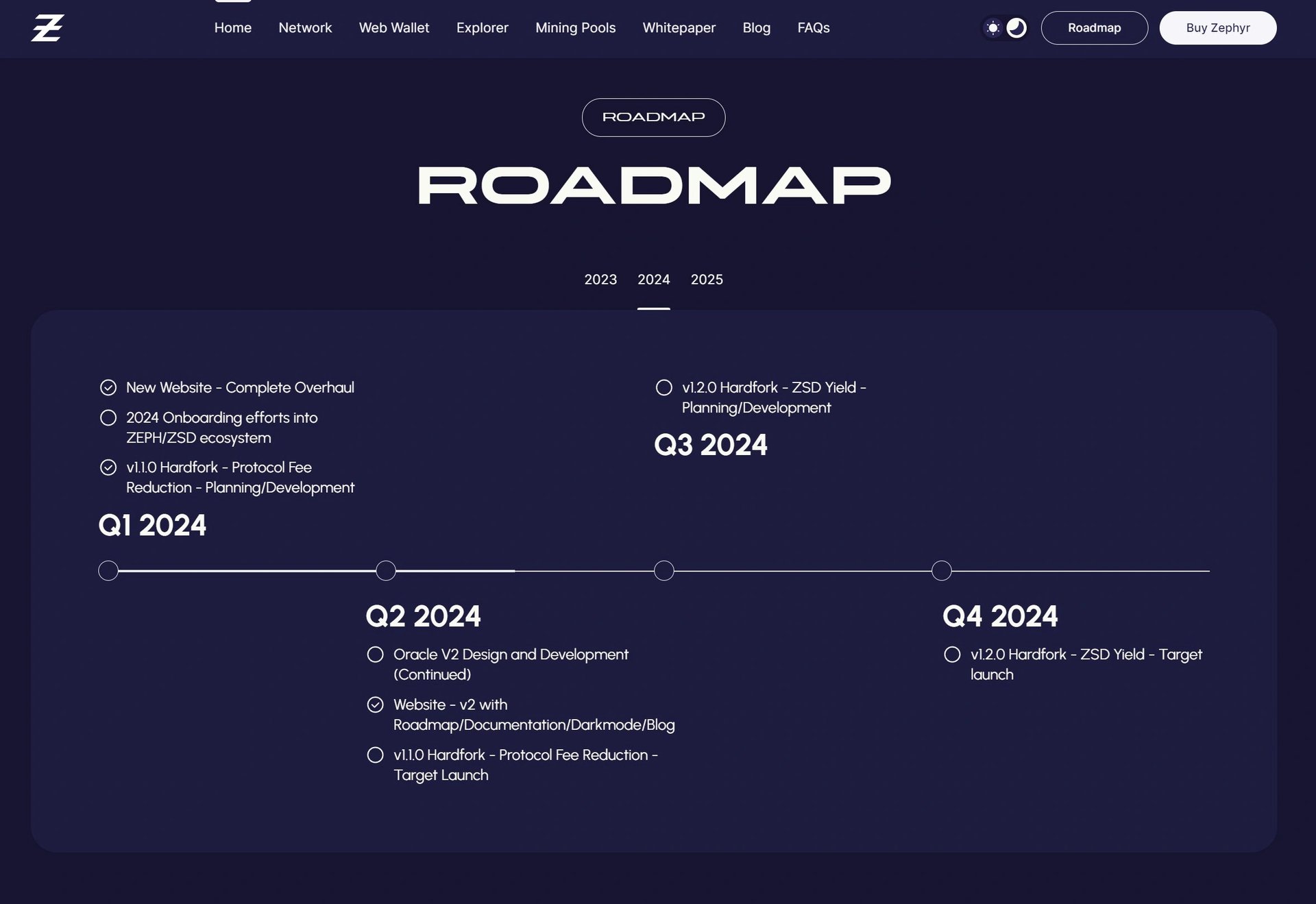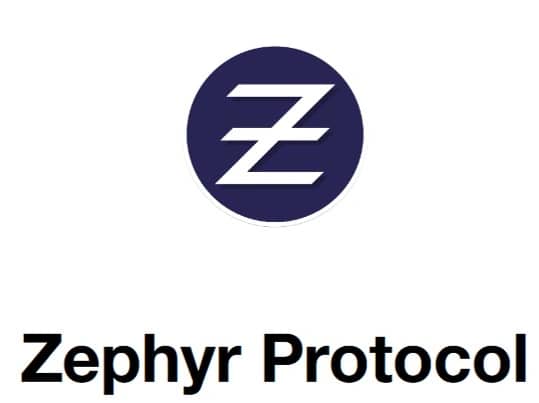위키 구독하기
Share wiki
Bookmark
Zephyr Protocol (ZRS)
Zephyr Protocol (ZRS)
제피르 프로토콜(Zephyr Protocol)은 Djed 프로토콜에서 영감을 받은 혁신적인 블록체인 기반 탈중앙화 금융(DeFi) 프로젝트입니다. 추적 불가능한 초과 담보화된 암호화폐 기반 스테이블코인 프로토콜을 제공합니다. 모네로(Monero)의 개인 정보 보호 기능과 Djed 프로토콜의 안정성 메커니즘을 독창적으로 결합하여 익명성과 재정적 안정성에 중점을 둡니다. 제피르 프로토콜은 2023년 5월 29일에 출시되었으며, $ZEPH, $ZSD, $ZRS의 세 가지 핵심 자산을 보유하고 있습니다. 이를 통해 세계 최초의 초과 담보화된 개인 정보 보호 기능을 갖춘 암호화폐 기반 스테이블코인을 제공합니다. [1]
개요
제피르 프로토콜은 단순한 암호화폐가 아닙니다. 디지털 자산 영역을 재정의하는 최첨단 혁신입니다. 개인 정보 보호 및 탈중앙화를 강조하는 스테이블코인 생태계로서 암호화폐 분야에서 매력적인 발전입니다. [2]
제피르 프로토콜은 ZEPH, ZSD, 제피르 리저브 쉐어(ZRS)를 포함하는 3가지 자산 모델로 운영됩니다. ZEPH는 프로토콜 내 기본 자산으로, ZSD 및 ZRS 발행을 위한 담보 역할을 합니다. ZEPH 모델은 스테이블코인이 강력한 기반을 갖도록 보장하여 안정성과 신뢰성을 향상시킵니다. 앞서 언급했듯이 ZSD는 사용자에게 개인 정보가 보호되고 안정적인 교환 매체를 제공하는 것을 목표로 하는 스테이블코인입니다. 반면 ZRS는 프로토콜 준비금의 지분을 나타내며, 보유자는 준비금의 초과 자본으로부터 이익을 얻을 수 있습니다. 이는 제피르 프로토콜을 차별화하는 독특한 장점입니다. [3]
제피르 프로토콜의 초과 담보화 메커니즘은 ZSD의 안전성과 안정성을 보장하는 핵심 기능입니다. 이 메커니즘은 ZSD가 발행 시점에 ZEPH 가치의 최소 400%로 담보되는 것을 보장합니다. 이러한 엄격한 조치는 변동성과 평가절하의 위험을 크게 줄여 사용자에게 안전하고 안정적인 자산을 제공합니다. 또한, 프로토콜은 레버리지 포지션, 발행 및 상환 작업으로부터의 수수료 수집, 가격 차이 및 블록 보상으로부터의 이익을 포함한 다양한 인센티브를 준비금 제공자에게 제공합니다. 이러한 인센티브는 프로토콜 참여와 투자를 장려하여 안정성과 성장 가능성을 높이도록 전략적으로 설계되었습니다. [4]
제피르 프로토콜은 탈중앙화되어 있으므로 단일 기관이 제어하지 않습니다. 제피르 스테이블 달러($ZSD)는 어떤 중앙 집중식 기관에 의해서도 발행되지 않으며, 어떤 지갑에도 보관되지 않고 제피르($ZEPH)의 프로토콜 내 준비금으로 뒷받침됩니다. 이는 중앙 집중식 기관이 발행하고 불투명하게 담보가 보관되는 기존의 법정화폐 기반 스테이블코인과는 극명한 대조를 이루며, 암호화폐의 원칙과 이상에 위배됩니다.
로드맵
2023년 1분기
- 메인넷 출시
- 초기 상장
- 백서
- 프라이빗 v1 테스트넷
2023년 2분기
- 퍼블릭 v1 테스트넷
- 새로운 GUI 지갑
- MEXC 상장
- 브랜딩
2023년 3분기
- Djed 얼라이언스 가입
- V1 하드포크
- ZSD 시장
- 웹 지갑
2023년 4분기
- 확장된 DJED 연구
- 오라클 V2 설계 및 개발 시작
2024년 1분기

- 새로운 웹사이트 - 완전 개편
- 2024년 ZEPH/ZSD 생태계 온보딩 노력
- v1.1.0 하드포크 - 프로토콜 수수료 감소 - 계획/개발
2024년 2분기
- 오라클 V2 설계 및 개발 (계속)
- 웹사이트 - 로드맵/문서/다크 모드/블로그 포함 v2
- v1.1.0 하드포크 - 프로토콜 수수료 감소 - 목표 출시
2024년 3분기
- v1.2.0 하드포크 - ZSD 수익률 - 계획/개발
2024년 4분기
- v1.2.0 하드포크 - ZSD 수익률 - 목표 출시
2025년 1분기
잘못된 내용이 있나요?
